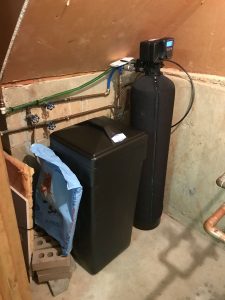Osmosis

The Reverse Osmosis System
While the membrane is the core part of the setup, Reverse Osmosis includes other types of filtration which can be made of up to five stages. Every system contains three pre-filters or post-filters, including a sediment filter, carbon filter, and the membrane itself. The sediment filter focuses on dirt, dust, and rust while the carbon filter reduces volatile organic compounds (such as acetone, acid, ethanol, formaldehyde, etc.), chlorine, and other contaminants that make your water taste or smell bad. To begin the process, water enters the system and passes through the sediment and chlorine filters that could damage the RO membrane. Then, the water dissolves particles through reverse osmosis, filtering through into a storage tank where it remains until needed.
Benefits
Are you ready for great-tasting, clean water? Call Lehigh Valley Water Systems today for a free quote and consultation on water softening, conditioning, testing, and much more.




